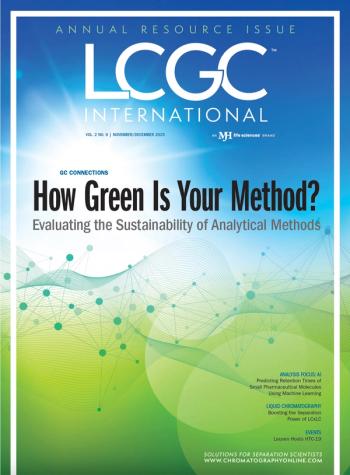
- The Column-08-02-2012
- Volume 8
- Issue 14
Fine wine?
A team of scientists has performed a series of analyses on three sets of Spanish red wine to see how price affects aroma chemical composition.
A team of scientists has performed a series of analyses on three sets of Spanish red wine to see how price affects aroma chemical composition.1 The wines were from different price ranges and were studied using a range of gas chromatography methods. Differences were found in the levels of 72 aroma compounds.
The most expensive wines had a higher content of wood-related compounds, ethyl phenols, cysteinil-derived mercaptans, volatile sulphur compounds, ethyl esters of branched acids, methional and phenylacetaldehyde and were low in linear and branched fatty acids, fusel alcohols, terpenols, norisoprenoids, fusel alcohol acetates and ethyl esters of the linear fatty acids.
The inexpensive wines displayed exactly the opposite attributes, and were highest in E-2-nonenal, E-2-hexenal, Z-3-hexenol, acetoin and ethyl lactate.
The expensive and medium-price wines could be categorized exclusively by odorant composition. However, the lowest-price wine also had to be acknowledged by taste as well.
The team concluded that the models for quality reveal a common structure, but that ultimately they are characteristic of a given sample set.
1. Ana Escudero et al., Journal of Agricultural and Food Chemistry60,5045–5056 (2012).
Articles in this issue
over 13 years ago
Nobel Laureate at Pittconover 13 years ago
Breath analysisover 13 years ago
Agilent acquisitionover 13 years ago
Olympic testingover 13 years ago
Tips & Tricks GPC/SEC: Faster Resultsover 13 years ago
Market Profile: Continuous Flow Analysis and Discrete AnalysersNewsletter
Join the global community of analytical scientists who trust LCGC for insights on the latest techniques, trends, and expert solutions in chromatography.



